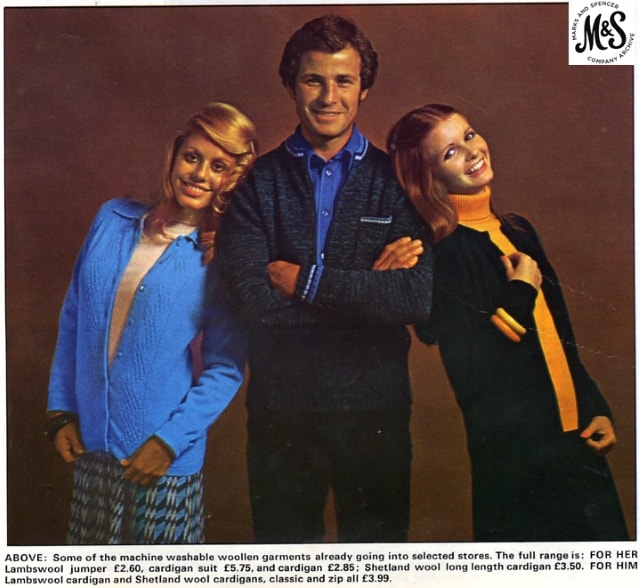What 130 years of M&S history can teach us about innovation
Hannah Jenkinson, an Archivist at the Marks & Spencer Company Archive, tells us the story of Innovation: the Key to Business Success – a course from the University of Leeds, developed in association with M&S. Explore the market-leading examples of innovation from the retailer’s 130 year history–from chilled chickens to crimplene cardigans–and the lessons that all businesses can learn from them.
≠
The Marks & Spencer Company Archive contains over 70,000 items documenting the history of M&S, from Michael Marks’ first Penny Bazaar in Leeds in 1884 to the present day. Alongside the business papers and reports you might expect, the collection also includes merchandise, garments, packaging, magazines, photographs, films and adverts.
Opening up the archive
In 2012, the archive moved to a new location on the campus of the University of Leeds, allowing the education community to access it for the first time. In 2013 we were asked to think of examples of M&S innovations, to include in this course exploring how innovation happens and why it’s crucial to business success.
As a pioneer in food and textile technology over the last 130 years, we’ve always used scientific developments to create products that have changed the daily lives of our customers, so it was difficult to choose just two M&S innovations to include. But we opted for two that we believe had an enduring impact on the retail industry.
Hatching the chilled chicken
M&S was the first food retailer to appoint a Technical Executive and Chief Chemist to the Food Division, recruiting Nathan Goldenberg in 1948. Goldenberg overhauled the food department and began introducing many of the food products that we know and love today.
One key development was the ‘cold chain distribution’ that M&S pioneered in 1960. This brought in the availability of chilled, rather than frozen or pre-cooked poultry, for the first time in food retail.

The archive collection documents the pioneering ‘cold chain’ in research papers, magazines, films and photographs. Used in Week 2 of the course, these articles highlight the revolutionary nature of this innovation, the impact it had on our business at the time, and its resounding effect on the way we shop decades later.
In today’s digital age the chance to buy a fresh, unfrozen chicken may not seem that mind-blowing, but in the early 1960s it was just as revolutionary as its contemporaries, like rock ‘n’ roll and miniskirts.
Spinning man-made yarns
In 1934, M&S was the first British retailer to set up its own research laboratory to pioneer new fabrics. Thanks to this advanced textile technology laboratory and close relationships with suppliers, we’ve always been at the forefront of the development of radical, easy-care synthetic fibres.
Week 1 of the course uses laboratory records, photographs of our technologists at work and marketing materials for the wonder fabrics as they evolved, to showcase the incremental innovations that M&S made in this area from the 1950s to the present day.

Such innovations have transformed the high street, bringing our customers soft new textures, silky finishes and bright patterns at an affordable price. They’ve also brought practical benefits, making all of our lives easier today.
For instance, in the early 1960s, M&S was the first retailer to launch seam-free, ladder resistant stockings, solving a problem that had been bugging ladies for years. And as technology evolved, we also introduced wool garments that could be machine-washed and new finishes for cotton, which mean clothes now need minimal ironing.
Developing the new course
The archive’s collaboration in the development of the course has been a rewarding experience. Being involved in such a significant project has helped to raise the profile of the archive not only across the University of Leeds, but also within the business and education communities.
Furthermore, reflecting the company’s unique approach to innovation – and sharing it with a large, diverse audience, who are able to engage and learn from the collection in an equally innovative and exciting way – is something that we’re very proud of.
What do you think you think is the world’s greatest innovation? Have a watch of this video, then let us know in the comments.
Learn more about innovation – Join Innovation: the Key to Business Success today.




